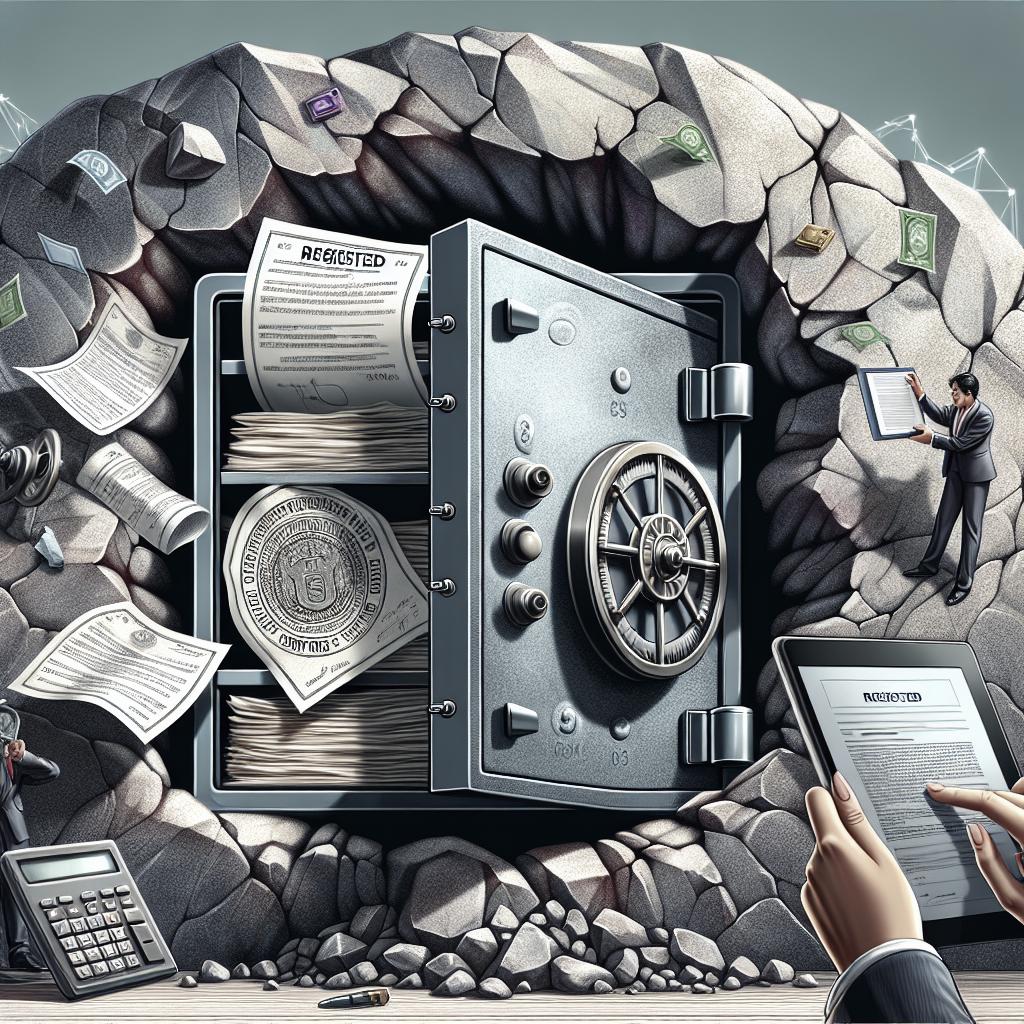<>
HTML “`
Managing your company’s assets efficiently is crucial for operational success and financial stability. In this blog post, we will examine various methods for tracking fixed assets, discuss why conventional methods such as spreadsheets may be inadequate, and explore modern solutions like fixed asset register software and RFID asset tracking systems. We will also delve into QR code asset tracking systems and the benefits they bring, as well as practical steps to deploy asset management operations effectively. Whether you’re new to asset tracking or looking to upgrade your current system, this guide will help you make informed decisions for your business.
What is Fixed Asset Tracking?
Fixed asset tracking involves monitoring and managing your company’s physical assets, such as machinery, computers, and furniture. This process includes recording details such as location, maintenance schedule, and depreciation of each asset. Accurate asset tracking ensures that your company can maximize the utility and lifespan of each asset, reducing the likelihood of asset loss or theft.
In addition to physical assets, fixed asset tracking can also encompass intangible assets such as patents and trademarks. By maintaining a comprehensive record of all assets, organizations can ensure that each asset is utilized efficiently and within compliance standards.
Why You Shouldn’t Use Spreadsheets
Spreadsheets have long been the go-to tool for tracking assets, but they come with significant drawbacks. Manual data entry is time-consuming, prone to errors, and difficult to keep up to date. As the volume of assets grows, managing them through spreadsheets becomes increasingly unmanageable.
Moreover, spreadsheets don’t offer real-time updates or alerts, making it challenging to track the current status of your assets effectively. They lack features such as automated depreciation calculations and maintenance scheduling, which are essential for precise asset management.
Using Fixed Asset Register Software
Fixed asset register software overcomes many of the limitations of spreadsheets by automating various processes. These advanced software solutions provide real-time data and updates, ensuring that asset information is always current. They also offer detailed reporting and analytics tools, which can help you make more informed business decisions.
Features like automated depreciation calculations, maintenance reminders, and easy integration with other business systems make fixed asset register software a valuable tool for any company. By centralizing asset data in a single, accessible platform, these solutions streamline the asset management process and improve overall efficiency.
What is an RFID Asset Tracking System?
RFID (Radio-Frequency Identification) asset tracking systems use electromagnetic fields to automatically identify and track tags attached to assets. These tags contain electronically stored information that can be read from several meters away, making RFID an excellent solution for tracking assets in large or challenging environments.
Implementation typically involves RFID tags, readers, and asset management software. Once set up, an RFID system can provide real-time visibility of asset locations, statuses, and movements within your organization.
RFID Benefits
RFID technology offers numerous advantages for asset tracking. It allows for quick and accurate inventory management, reducing the time and labor costs associated with manual tracking. Additionally, RFID can track multiple assets simultaneously and does not require direct line-of-sight for scanning, offering greater flexibility in asset management.
Another significant benefit is enhanced security. RFID systems can help prevent unauthorized movement or removal of assets, thereby reducing the risk of theft. By providing real-time data and alerts, RFID systems enable more proactive asset management.
What is a QR code?
QR (Quick Response) codes are two-dimensional barcodes that contain encoded information about an asset. Unlike traditional barcodes, QR codes can store a larger amount of data and can be easily scanned using smartphones or specialized QR code readers. This makes them a versatile tool for asset tracking.
QR codes are generally printed on labels and affixed to assets. They can contain various types of information, such as the asset’s serial number, location, purchase date, and maintenance history. This data can then be quickly accessed and updated through scanning.
Advantages of QR-Code Asset Tracking System
QR code asset tracking systems are cost-effective and easy to implement. They do not require expensive equipment or extensive training, making them accessible for businesses of any size. Scanning QR codes is straightforward and can be done with a mobile device, which most employees already possess.
Besides cost savings, QR codes can improve accuracy and efficiency in asset management. They allow for quick data retrieval and simplify the process of updating asset information. This leads to better decision-making and improved operational efficiency.
Using Fixed Asset Tags
Fixed asset tags are physical labels attached to assets, containing essential information for tracking and management. These tags can be barcodes, QR codes, or RFID tags, each offering different benefits depending on the asset type and tracking requirements.
Effective use of asset tags involves selecting the appropriate type for each asset and ensuring that the information on each tag is accurate and up-to-date. Integrating these tags with asset management software can further streamline the tracking process and provide more comprehensive data.
Deploying Asset Management Operations
Deploying an effective asset management operation involves several key steps. First, you need to choose the right asset tracking system for your business needs, whether it’s RFID, QR codes, barcodes, or a combination of these. Next, you should tag all of your assets and input the relevant data into your asset management software.
Training your staff on how to use the asset management system is also crucial. This includes how to scan tags, update asset information, and generate reports. Regular audits and maintenance of the system will ensure its effectiveness and longevity.
Frequently Asked Questions
What Is Fixed Asset Tracking, and Why Is It Important for Businesses?
Fixed asset tracking involves the systematic recording and monitoring of a company’s physical and tangible assets. This is crucial for maximizing the lifespan and utility of each asset, ensuring compliance with regulatory standards, and minimizing the risk of asset loss or theft.
How Does an Asset Tracking System Work?
An asset tracking system uses tags and software to record and monitor the status, location, and condition of assets. Depending on the technology used (e.g., barcodes, QR codes, or RFID), the system can provide real-time data and alerts, simplifying asset management and improving accuracy.
What Are the Benefits of Using Fixed Asset Management Software?
Fixed asset management software centralizes asset data, automates processes such as depreciation calculations and maintenance scheduling, and offers detailed reporting and analytics. This improves efficiency, reduces errors, and provides better insights for decision-making.
How Can RFID and QR Code Asset Tracking Systems Improve Asset Management?
RFID and QR code asset tracking systems offer real-time visibility of asset locations and statuses, improve inventory management accuracy, and reduce labor costs associated with manual tracking. They also enhance security by preventing unauthorized movement or removal of assets.
What Features Should I Look for in the Best Fixed Asset Tracking Software?
Top features to look for in fixed asset tracking software include real-time updates, automated depreciation calculations, maintenance scheduling, integration with other business systems, and comprehensive reporting capabilities. Additionally, the software should be user-friendly and scalable to meet the growing needs of your business.
How To Create a Fixed Asset Tracking
Choose a Better Way to Track Your Assets
To create an effective fixed asset tracking system, start by evaluating your current asset tracking methods and identifying areas for improvement. Consider the size and nature of your asset inventory and choose the technology that best suits your needs, whether it’s RFID, QR codes, or fixed asset management software.
After selecting your preferred asset tracking solution, implement it by tagging all assets and integrating them into the chosen system. Ensure that all relevant data is accurately recorded and regularly updated to maintain the effectiveness of your asset management operations. Consistent training and regular system audits will help in keeping the process smooth and efficient.
Lessons Learned
| Topic | Details |
|---|---|
| Fixed Asset Tracking | Involves monitoring and managing physical and intangible assets to maximize their utility and lifespan. |
| Why Spreadsheets Are Inadequate | Prone to errors, time-consuming, lack real-time updates, and don’t offer advanced features. |
| Fixed Asset Register Software | Automates processes, provides real-time data, detailed reporting, and integrates with other systems. |
| RFID Asset Tracking System | Uses electromagnetic fields to identify and track tags, offering real-time visibility of assets. |
| Benefits of RFID | Quick inventory management, reduced labor costs, and enhanced security. |
| QR Codes | Two-dimensional barcodes that store significant data and are easily scannable. |
| Advantages of QR-Code Tracking | Cost-effective, improves accuracy, and can be scanned with smartphones. |
| Fixed Asset Tags | Labels (barcodes, QR codes, or RFID) attached to assets for easy tracking and management. |
| Deploying Asset Management | Choose the right system, tag assets, input data, train staff, and regularly audit the system. |
| FAQs | Explained fixed asset tracking, the working of asset tracking systems, benefits of asset management software, and features to look for in the best tracking software. |
“`

